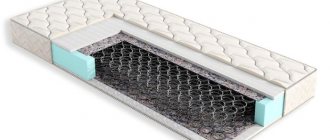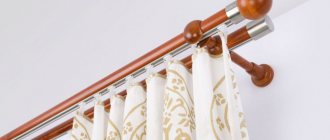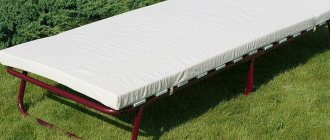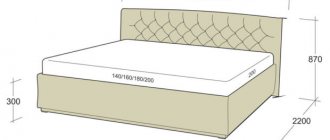Therefore, when buying new sockets and switches, you can and should choose those that already today have several characteristic differences from previous traditional ones.
This, of course, does not mean that old sockets are bad, however, the engineering thought of manufacturers does not stand still and you need to use all the advantages of innovation in your apartment. Let's compare how modern sockets and switches differ from previous budget models.
Caliper
The new sockets are made of two layers:
- base – galvanized steel
- cover - polycarbonate
What benefits does this provide? Polycarbonate provides additional electrical safety.
Even if somehow a phase from the wiring breaks through to the socket body, the front part of the caliper will be reliably insulated. And touching it with your fingers will not give you an electric shock.
But often, many electricians unscrew and disassemble sockets to find a fault, without even removing the voltage from it. This function will greatly protect you from accidental electric shocks.
And the presence of two layers allows you to increase the strength of the entire structure by about 50% compared to a traditional galvanized steel caliper.
Panel
The front panel is secured with latches. To dismantle and install it back, it takes no more than 3 seconds.
Just pry it from the side with a screwdriver and pull it out with your fingers.
There is even a marking in which places you need to pry with a screwdriver.
Put it in place in the same way, pressing and snapping it into place at the fastening points.
However, if you come across a fake whose plastic elasticity deteriorates over time, these latches can turn from a plus into a minus.
After a couple of years, when dismantling, you may forget how they initially snapped into place and accidentally break them.
Traditional bezel mounting requires longer dismantling. You will have to unscrew the mounting screw, and maybe even more than one.
And if you perform such an operation quite often, then it is quite possible to ruin the thread. After which, you will have to replace not the socket, but the entire socket.
If you plan to use sockets and switches even at the finishing stage, then it is better to choose mechanisms with protective covers.
Firstly, they protect the products during transportation. And secondly, they allow you to paint walls and hang wallpaper even without dismantling the front panels.
Selection by components
The base is made of ceramic or plastic material. Ceramic is able to dissipate heat and is flame resistant. The plastic base, on the other hand, is not as fragile, and some types of plastic can also resist fire.
The metal used for conductive parts is brass or bronze with various coatings. When choosing a socket with brass elements, you need to take into account their low reliability in conditions with high humidity. It is also undesirable to use it with aluminum wires, since these materials oxidize upon contact and slow down the conduction of electricity.
When choosing which sockets are better, it is difficult not to pay attention to models with bronze contacts or pressure springs - their rating surpasses all reliability indicators. True, such sockets are very rare - these are premium products and are not purchased in stores for the mass consumer.
socket with grounding contacts
An integral part of a modern outlet are grounding contacts, which allow you to save equipment, wiring, as well as the life and health of their owner. In addition, such a protective element is capable of removing static voltage that periodically appears on the housings of electrical appliances and “jerks” users when touched. This is especially true for the use of water-related devices. There is no need to take risks - you need to choose a manufacturer of household sockets that has taken care of such an element.
The fastening mechanism is built into the inside of the socket - it is responsible for the reliability of fastening the device. If this unit is not critical for external sockets, then the internal spacer must be resistant to mechanical loads.
The choice of outlets is also influenced by the quality of the front panels. They do not transmit current and do not hold the entire device in place, but they provide an insulating layer that prevents foreign substances from getting inside. The choice of a rosette front panel can be timed to coincide with the interior design of the room - then you need to separately pay attention to their material and style of execution. Some manufacturers produce sockets with several options for front panels, which can be freely changed without interfering with the internal part.
Overlay frame
Frames in good sockets are attached independently of the front panels. This allows you to freely dismantle and install them.
In older series, the frame is secured and tightened by the front panel. Therefore, in them, replacing the frame with another of the same type, but of a different color, occurs only simultaneously with the panel.
In this case, it will be better if such products are two-layer.
- outside – ABS plastic
- reverse inner side - reliable polycarbonate
Inside the panel there are latches, due to which the fixation on the mechanism occurs. Please note that they may have several marks.
This will make it easy to align the frames in case of slight unevenness in the walls.
About the main trends
There are also fashion trends in the world of electrical installation products. Of course, if we are talking about products from European manufacturers, offering customers not only reliability and safety, but also design developments.
Main trends of 2020:
- laconic style and simplicity of lines;
- maximum ergonomics and ease of use;
- variability of color palette and textures;
- a combination of naturalistic and industrial styles;
- modularity and versatility.
We are being offered more and more options and freedom: a mix of several frames in one module, playing with textures, lighting, and using additional features. So, for example, sockets are often purchased together with plugs, decorative and protective covers that can be locked with a key.
Internal insulation
A high-quality socket, even with the front panel removed, ensures complete electrical safety.
All internal current-carrying parts are securely closed and insulated. There is no access to them.
In sockets of the budget series, there are always clearly open live parts.
And if you work with a screwdriver that does not have an insulated tip, then you may well either get energized or accidentally overlap the phase and the grounded body with the tip itself.
Curtains
In accordance with safety regulations, all sockets installed in living rooms must have protective curtains. How do good sockets differ in this regard from cheaper ones?
In budget products, the curtain mechanism is fixed directly to the back of the front panel.
Very often, the following problem arises due to such curtains. There are combination type forks. That is, part of the fork legs are insulated with plastic, and the ends themselves are metal.
Most often, such plugs are used in various types of chargers. Their metal ends are slightly thicker than the middle part of the contact legs.
This plug plugs into a regular outlet without any problems. But when you try to remove it and pull it out, the protective curtains bite the contacts like a guillotine.
Biting occurs precisely at the boundary of the plastic-metal transition of materials. As a result, the plug gets stuck in the socket.
And to pull it out you have to put in extra effort. Often this all ends with a break in the protective curtains.
In a good modern socket, the shutter mechanism is recessed deep into the body, and not located on the back side.
Accordingly, such a problem as biting the fork simply does not exist. Any fork goes in and out of it very smoothly.
What sockets and switches should be installed in the apartment?
Two common groups that do not leave much choice for a person living in a residential building:
- securely attached hidden (or internal) sockets;
- as safe as possible, with wires laid in special grooves (overhead or external).
The second group is used exclusively for unique decorative purposes or is recommended by fire safety regulations for installation in wooden premises. In an apartment, office or institution, internal sockets are used, in which only the rim and holes for the plug remain for visual inspection.
In reality, everything turns out to be not so simple: you can decide on the subject of preference only by knowing your own requirements: what room the structure is intended for, what safety measures are needed, and even what style match it is planned to achieve. Since these are functional devices, for continuous operation they will require reliability and additional gadgets.
Fastening
Sockets are fastened in both traditional and new models either with screws located in the socket box or with clamps. When tightened, the grips dig into the walls of the socket box.
However, the design of the improved models has its own peculiarities. The so-called “double tooth” technology is used here.
It allows you to increase the tearing force by about one and a half times.
Another difference between a high-quality socket is the presence of a special profile, the so-called “dovetail”. It makes it very easy to install sockets and switches in blocks.
If you need to connect two or more mechanisms under one frame, according to the Pocket Electric level, you set the very first one perfectly exactly, and mount the second and subsequent ones using a dovetail.
As a result, all mechanisms will be quickly and smoothly installed in their seats.
Pay attention to additional features
In today's rapidly changing world, living space is changing just as rapidly, adapting to the numerous needs of residents. The living room transforms from a relaxation area into a workspace, a playroom for children, and back.
Lighting and socket scenarios must quickly adapt to the new function. Therefore, it makes sense to choose lighting that is as multifunctional as possible.
Modular systems are the way out. Instead of numerous lighting fixtures, you buy attachments and simply change them, depending on the function that the lighting now needs to perform.
For example, in the bedroom this could be a reading light, main light or local bedside lighting.
The Plug & Light system from GIRA can quickly adapt to different needs: a wall lamp can serve as illumination for a work area in the kitchen, and if rotated 180 degrees, it will create pleasant diffused lighting for a romantic dinner. To do this, you do not need to install several different types of lighting fixtures: the system has different replaceable modules that are easily attached to a magnet and each of which can illuminate the room differently.
Screw or screwless contacts
Modern and most old models also differ in the technology for connecting conductors. The newest sockets have screwless terminals that allow you to very quickly both connect and disconnect cables or wires.
There are still heated debates among electricians about which contacts are more reliable. Supposedly screwless, they reduce the area of contact with the wire.
This reduces current-carrying capacity and reliability. However, such a dispute is reminiscent of the age-old question, which is better: Wago or twist?
Here a lot depends on the quality of execution and operating conditions. There are sockets where a fairly powerful spring exerts pressure on just one point - for example, from manufacturers Gira, Legrand, Schneider.
But ABB has a spring with less elasticity, but it presses at two points simultaneously.
Use all products according to standards and recommendations and problems will never arise. For example, in some European countries, at the legislative level, the use of screw terminals has been prohibited since the 60s.
The main advantage of screwless terminals is that such connection does not require further maintenance. As the manufacturer assures, after installation, subject to rated loads, you will not look into such an outlet again for many decades.
All older sockets use screw technology. The stripped wire strands are clamped with traditional screws.
Moreover, the clamping force is also normalized. Professional installers use special torque screwdrivers for this.
Such contacts are much more labor intensive during installation and disassembly. In addition, it is advisable to periodically tighten these clamps, that is, maintain them. And this entails dismantling almost half of the structure of the entire outlet.
Wires pressed with a screw during temperature fluctuations - heating at maximum load and cooling when it is turned off - can shrink. And accordingly, the contact will weaken over time.
In high-quality sockets, the conductors in screwless contacts are in a constant state of tension, no matter how hot or cold.
In addition, they have a limiter template on the reverse side, which shows how accurately in millimeters the insulation needs to be removed from the core.











